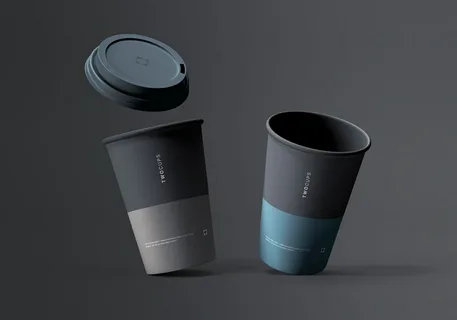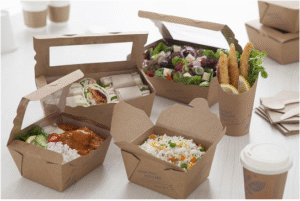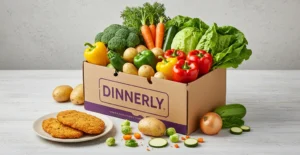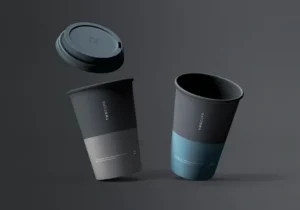
Printed cups have become a daily necessity in coffee shops, restaurants, and events. Yet, their environmental impact is often overlooked. Many businesses face a choice between compostable and recyclable options. Understanding the difference can help make better decisions for the planet and for customers.
What Makes a Cup Compostable?
Compostable cups are designed to break down into natural elements. They are usually made from renewable plant-based materials such as corn starch, sugarcane, or PLA (polylactic acid). These materials allow the cups to decompose in industrial composting facilities, turning into soil within a few months. Unlike plastic, they do not leave behind harmful micro-particles that pollute the environment.
A compostable cup is tested to meet specific standards. For example, it must completely break down under controlled composting conditions within 90 to 180 days. These conditions require high heat, moisture, and microbial activity. In the right facility, the process works smoothly. However, if these cups end up in a landfill or a recycling bin, the outcome changes. Landfills lack oxygen and moisture, which slows decomposition. In recycling plants, compostable materials may contaminate the recycling stream.
The key strength of compostable cups is their origin. They rely on renewable resources rather than fossil fuels. This means they lower carbon emissions during production. Many businesses choose them to highlight their commitment to sustainability. They are also a favorite in areas where municipal composting systems exist. Still, without access to such facilities, the promise of compostable cups often falls short.
Therefore, compostable cups are an excellent solution when supported by proper waste infrastructure. They can return nutrients to the earth and reduce dependence on plastic. Yet, their effectiveness depends on how well they are collected, sorted, and processed after use.
The Basics of Recyclable Cups
Recyclable cups are designed to go through the recycling system. They are usually made of paper lined with a thin layer of plastic or sometimes just recyclable plastics. These materials allow them to be collected, processed, and turned into new products such as paperboard or tissue.
The idea behind recyclable cups is to extend the life of the raw materials. Instead of throwing them away, they can be reused in manufacturing cycles. However, the challenge lies in separating the layers. Many paper cups have a plastic lining to prevent leaks. This lining makes recycling difficult. Specialized facilities are needed to separate the two materials, but such facilities are limited.
Even so, recyclable cups have benefits. In regions with strong recycling infrastructure, they can be collected easily with other paper and cardboard items. This keeps them out of landfills and gives them a second life. They also require fewer natural resources to produce compared to compostable alternatives, since the recycling process itself saves energy.
The success of recyclable cups depends on consumer participation. If customers throw them in the trash, the system fails. Clear labeling, education, and accessible recycling bins can help. Businesses that prioritize recycling also need to work with local waste management companies. Ensuring proper collection increases the chance that recyclable cups achieve their purpose.
The Future of Sustainable Cups
The future of printed cups lies in innovation and infrastructure. Scientists and manufacturers are working to create better materials that break down faster and recycle more easily. Hybrid solutions may emerge, combining compostable and recyclable features.
Governments are also enforcing stricter packaging laws. Many countries are banning single-use plastics, which pushes businesses to seek sustainable options. This creates more demand for both compostable and recyclable cups. As demand grows, production costs are likely to decrease, making them more affordable.
Technology in waste management is also improving. New recycling plants can handle layered cups more efficiently. Advanced composting systems are spreading in urban areas. These changes will make sustainable cups more effective.
In the future, businesses will not have to choose between two imperfect systems. Instead, they may have access to cups that are both cost-efficient and environmentally sound. Until then, the key lies in making informed choices and supporting existing systems. For instance, many companies now explore custom options through https://ibexpackaging.com/custom-cups/ to match their sustainability goals.
Environmental Impact Comparison
When comparing compostable and recyclable cups, it is essential to look at their overall impact on the environment. Both options aim to reduce harm, but they achieve it in different ways. Compostable cups work by breaking down naturally, while recyclable cups extend material life through reuse.
Compostable cups reduce dependence on fossil fuels since they are made from renewable plants. Their carbon footprint is lower during production. When composted correctly, they return nutrients to the soil, creating a closed-loop system. However, if they end up in landfills, they may produce methane gas due to anaerobic conditions. Methane is a potent greenhouse gas, which offsets some of their benefits.
Recyclable cups, on the other hand, help minimize waste by reusing materials. Recycling saves up to 60% of energy compared to producing new paper or plastic. Yet, the problem lies in infrastructure. Many recycling plants are not equipped to handle cups with plastic linings. If not properly sorted, recyclable cups may still end up in landfills or incineration plants.
In terms of energy, recycling uses less than composting because it avoids growing new crops. But, compostable cups contribute positively when they are turned into soil and used for agriculture. The key difference is that one focuses on extending material use, while the other focuses on natural regeneration.
Cost Considerations for Businesses
Businesses often wonder about the financial side of compostable versus recyclable cups. Both options are generally more expensive than single-use plastic, but the difference lies in production and waste handling.
Compostable cups cost more because they use plant-based raw materials. The technology and certification standards also add to the expense. On average, they may cost 30 to 40 percent more than traditional plastic cups. However, many eco-conscious consumers are willing to pay a little extra for sustainable packaging. Businesses can market compostable cups as a premium choice, enhancing brand value.
Recyclable cups tend to be less expensive because they are made from conventional paper and plastic. They also benefit from established supply chains. The main cost for businesses comes from ensuring proper collection and recycling partnerships. If the recycling system is inefficient, the investment may not pay off in sustainability outcomes.
For companies choosing between the two, the decision often rests on customer expectations and available infrastructure. Cafes in eco-friendly communities may gain more loyalty by offering compostable cups. On the other hand, large chains may prefer recyclable cups because they align with broader recycling programs.
Consumer Perception and Demand
Consumers today are more aware of sustainability than ever before. They want businesses to reduce waste and use environmentally friendly packaging. The choice between compostable and recyclable cups plays an important role in shaping brand image.
For many customers, compostable cups symbolize progress. They are seen as modern, natural, and eco-friendly. Customers appreciate that these cups can turn into soil, which creates a positive emotional connection. Businesses that offer them can highlight their commitment to green practices. This often builds trust and loyalty.
Recyclable cups also appeal to customers, but the message is different. They emphasize practicality and reuse rather than natural decomposition. Some consumers may be skeptical if they know about recycling challenges. Others may feel more comfortable because recycling is familiar and easy to understand.
What matters most is communication. Businesses must educate customers about how to dispose of their cups. Clear signage and instructions can make a big difference. If compostable cups are provided, but compost bins are missing, customers will feel misled. Similarly, recyclable cups must have proper collection systems nearby.
Challenges in Waste Management
One of the biggest barriers to sustainable cup use is waste management. Compostable and recyclable cups both face challenges when the right infrastructure is missing.
Compostable cups require industrial composting facilities. These are not available in every city. If compostable cups end up in landfills, they decompose slowly and may release harmful gases. Home composting is rarely suitable for them, because the temperature and conditions are not enough for full breakdown.
Recyclable cups also face obstacles. The plastic lining in paper cups makes recycling complex. Many facilities lack the machines to separate layers. As a result, cups are sometimes sent to landfills even when customers place them in recycling bins.
To overcome these challenges, collaboration between governments, waste management companies, and businesses is crucial. Cities need to invest in better composting and recycling systems. Businesses must also train staff and guide customers. Without proper systems, both compostable and recyclable cups lose their benefits.
Practical Tips for Choosing the Right Option
Businesses often ask which option is better for them. The answer depends on several practical factors:
- Check local facilities: If composting services are available, compostable cups may be best.
- Consider customer expectations: Eco-conscious customers often prefer compostable materials.
- Review waste collection systems: If strong recycling programs exist, recyclable cups can work well.
- Balance cost with branding: Compostable cups may cost more but offer stronger branding opportunities.
- Train staff and guide customers: Proper disposal is the key to both options’ success.
Making the right decision requires looking at the bigger picture. The choice is not only about the cup itself but also about how it will be used and disposed of.
Conclusion
Compostable and recyclable printed cups both aim to reduce environmental harm, but they work in different ways. Compostable cups return to nature when handled in proper composting systems, while recyclable cups give materials a second life through reuse. Each option has strengths, but both depend heavily on waste management infrastructure and consumer awareness.
For businesses, the decision often comes down to cost, customer expectations, and local facilities. Compostable cups highlight a brand’s eco-friendly image, while recyclable cups align with established recycling systems. Neither choice is perfect, yet both represent steps toward reducing single-use plastic waste.
Enjoyed the Read? Share It!




